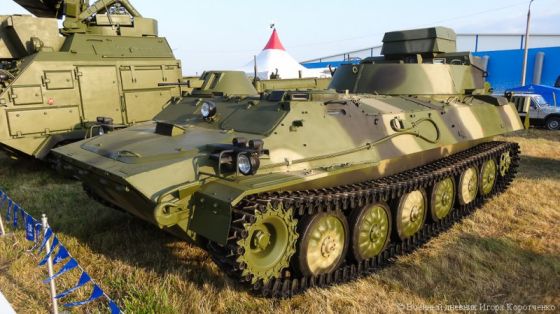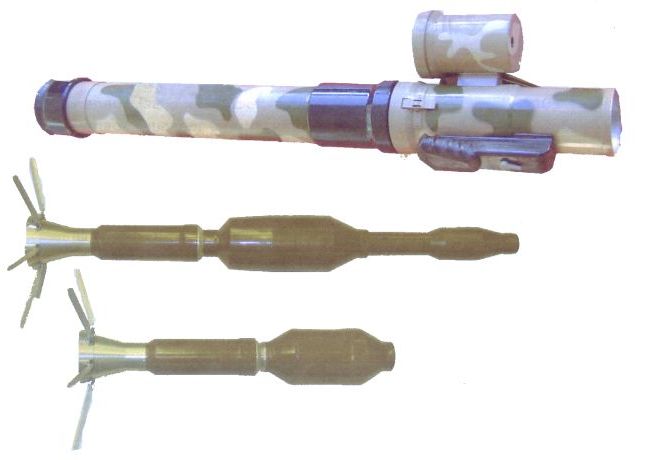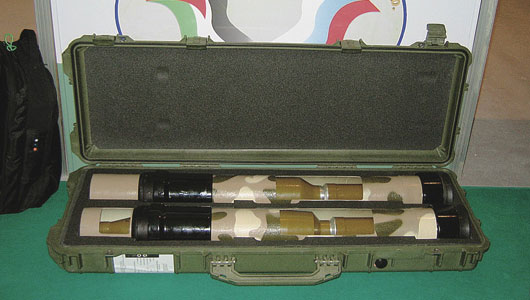You make a great point about the inevitable difficulty infrared homing missiles will more frequently encounter with the deployment of the countermeasures you mentioned.
Don't get me wrong, I think IIR guided missiles have interesting potential, but aircraft already have DIRCMs and I the Russians have various ground based systems to interfere with optical guidance systems too... which is not to say everyone will have them everywhere... but IIR sensors are best against vehicles... whether it is a tank or an aircraft and they certainly offer fire and forget potential...
Another advantage of QWIP sensors is that they are just like a CCD chip array in a digital camera that can be sensitive to a range of optical frequencies including IR and UV and visible light... TV guided missiles and systems are actually pretty useful and very much under rated... especially moving targets...
With mass production bringing the costs down pretty soon you could print them out like CDs for a dollar each like a cheap camera on a cellphone...
The thing is that if the guys on the front line are just going to be shooting at a bush with a sniper in it, or a room in a building with a MG position then super high tech guidance is not only not useful, it is a drawback because it does not help much, and you still have to pay for it.
Instead of putting an IR sensor on the nose of the missile, it makes more sense to spend 20 times that and put a super high quality high performance IIR sensor on the launcher with a built in laser range finder. That way your soldiers can sit on the battlefield spotting enemy targets and lasing their distance... together with the troops location and the angle and range to the enemy and take an image of the target and transmit that data up to HQ... you don't need to destroy any of them... the value is passing back ID and location to artillery... somewhere 10km away a 2S1 with the new comms and digital upgrades will then start firing on your targets... real cheap and safe from return fire. You could monitor the attack and call in fire corrections or the artillery unit could launch a UAV and use that to mark targets for guided shells in top attack mode...
I concede that the Kornet's 8km range, power and guidance is more suited for anti-tank operations especially when infantry mobility is factored in -- as you point out.
The two things we know they are working on is a medium range very small fire and forget missile for use on armour in a retractable mount with what appears to be half a dozen ready to fire rounds, and an upgraded SPG9 type weapon.
The former might be a javelin type missile, while the latter is more like an extended range RPG for cheap simple use against enemy positions from a safe distance.
Personally I think for the medium range weapon a beam riding guidance system and high flight speed would make it much better than an IIR guided model that would be fire and forget.
I have seen a few designs of jamming weapons... one for jamming UAVs, but also one for jamming optical systems using a laser... Javelin like guidance might not be of any use against a similar level enemy... and against third world countries it is using a Rolls Royce to plough a field... too expensive and not actually the best choice for the job...
I was under the impression that Russia was thinking of introducing a Fire & Forget missile (Baikal) and that this was to be a replacement for the Metis-M1 for special forces.
The only applications for it I have seen is as a mini weapon on IFVs in a multi tube retractable launcher... but if they were going to introduce a fire and forget IIR guided ATGM then it would make sense to use it in special forces units only... would be too expensive and wasteful for general issue.
Reducing the size and weight of electro-optical sighting systems would make the Metis-M1 even better, so I hope they do precisely just that; a fiber-optic link would also be a welcome feature. And no, I'm not advocating for adding IIR/CCD systems to the missile.
I see what you are doing there... but still think a laser beam riding guidance system to replace the wire, and reduce the warhead and greatly increase the speed and add a terminal dive to the trajectory to get a diving top attack weapon on the cheap with a high flight speed shortening the engagement time to a minimum.
Yes, that would be better than using the drones to designate targets; you could probably use laser-guided S-8 rockets as well.
Yes... they are talking about new modular rocket pods for aircraft that are square that include 80mm, 122mm, and the old 57mm rockets.... the latter were dropped because of their very light payload, but with guidance then the small payload actually becomes a virtue because there is less collateral damage around the place.
From memory the HE payload of the 57mm rockets was about 800 grammes, so about 5-10 times the mass of an average hand grenade... but with improved accuracy that could easily get most jobs done against enemy forces or light unarmoured vehicles.
Even if the 57mm rockets are smoke rounds to mark targets, or illumination rounds in the mountains...
The main advantage of the 57mm rockets were numbers as the 16 and 32 round pods were pretty standard... the former for light platforms and the latter for helos and aircraft... compared with 7 shot pods and 20 shot pods respectively for the 80mm rockets.
That's a very good point and I really have no answer to that, especially in relation to the general army. SF and Commandos are usually equiped with more capable, more expensive equipment, and so such an expense could be more easily justified for these armed units.
Wasn't trying to be smart... one option would be smart fusing to make the warheads dual purpose... a normal HEAT round needs to have the fuse in a very specific place to get it to form the plasma beam, and of course the cone lining is often made of fairly exotic materials that are not especially cheap, and there is no real fragmentation effect from most HEAT rounds, but with smart fusing you could detonate it from a different place so it just goes off like a bomb and spreads shrapnel all over the place. I believe the Vikhr missile has such a warhead and before launch you flick a switch for either armoured target or soft aircraft or ground target to determine how the warhead works.... ie HEAT or proximity fused HE Frag....
Perhaps the best option would be to have warheads you can unscrew... so carry 3-4 HEAT warheads as well as 10 missiles with HE Frag warheads and in the field if there is enemy present you could remove the HE Frag warheads and replace them with HEAT warheads. With special forces it might actually be useful to have an adapter that you can attach the spare warheads to and use the HE Frag warheads as mines and the HEAT warheads as anti armour mines designed to attack armour from the side or below...
Even the usually extravagent US Military has conceded that the Javelin is simply not cost-effective and have consequently ordered recoiless rifles for their troops in Afghanistan. The Carl Gustav has made a comeback.
On paper it sounds clever, but when you hand it to ordinary troops in a combat area where the enemy simply have no armour it really does not make sense... I mean if each shot is destroying a 2 million dollar tank then you could say it is not so bad, but when it blows up a taleban soldier and a bush... if you had walked over there and said.... look this missile costs $500,000 dollars... I'll give you $50,000 US dollars to go home and forget about this war he would probably be very keen... especially considering the alternative is to get blown up.
The CG is a great weapon and seriously under estimated in most western forces... it has a wide range of very capable rounds and is relatively cheap.
The Russians have an enormous range of shoulder fired weapons that do pretty much the same thing and the reintroduction of the SPG-9 makes a lot of sense... especially with new ammo and new sights.
120mm mortars are also very useful in mountains too.














